-
Welcome to BirdForum, the internet's largest birding community with thousands of members from all over the world. The forums are dedicated to wild birds, birding, binoculars and equipment and all that goes with it.
Please register for an account to take part in the discussions in the forum, post your pictures in the gallery and more.
You are using an out of date browser. It may not display this or other websites correctly.
You should upgrade or use an alternative browser.
You should upgrade or use an alternative browser.
I'm very impressed with the AF-S NIKKOR 80-400mm f/4.5-5.6 G ED VR (1 Viewer)
- Thread starter Neil
- Start date
More options
Who Replied?I just got back from 10 days in Botswana where the 80-400/AFS lens got a lot of work. I had also taken the 70-200/2.8 but left it in the room after the first drive.
The lens was used on the D800 on two drives a day of up to 7 hours for 9 days. I shot about 40 gigs/day and had no problems despite the bouncing on the rough roads and the dust. The vehicles had more trouble with wheel nuts coming off and battery leads shaking loose.
I did have to wipe the lens down every evening with a wet cloth.
Here are a few photos and I have a SET at http://www.flickr.com/photos/7892550@N03/sets/72157635223473022/
Neil
Botswana, Africa.
August 2013
The lens was used on the D800 on two drives a day of up to 7 hours for 9 days. I shot about 40 gigs/day and had no problems despite the bouncing on the rough roads and the dust. The vehicles had more trouble with wheel nuts coming off and battery leads shaking loose.
I did have to wipe the lens down every evening with a wet cloth.
Here are a few photos and I have a SET at http://www.flickr.com/photos/7892550@N03/sets/72157635223473022/
Neil
Botswana, Africa.
August 2013
Attachments
-
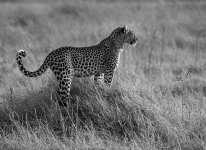 leopard khwai D800 80-400mm B&W_N8D7841_edited-1 copy.jpg373.7 KB · Views: 138
leopard khwai D800 80-400mm B&W_N8D7841_edited-1 copy.jpg373.7 KB · Views: 138 -
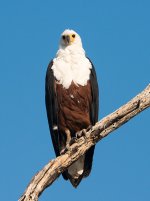 fish eagle khwai D800 80-400mm_N8D7948_edited-2.jpg173.2 KB · Views: 176
fish eagle khwai D800 80-400mm_N8D7948_edited-2.jpg173.2 KB · Views: 176 -
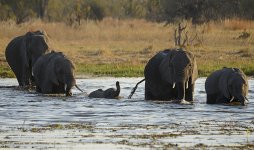 elephants river D800 80-400mm_N8D8609_edited-2.jpg441.8 KB · Views: 120
elephants river D800 80-400mm_N8D8609_edited-2.jpg441.8 KB · Views: 120 -
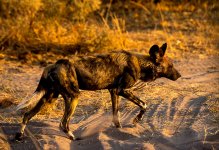 wild dog khwai D800 80-400mm_N8D7758_edited-1.jpg482.9 KB · Views: 143
wild dog khwai D800 80-400mm_N8D7758_edited-1.jpg482.9 KB · Views: 143 -
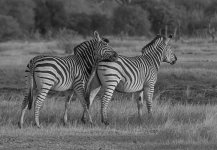 zebras D800 80-400mm B&W_N8D8769_edited-1.jpg380.8 KB · Views: 119
zebras D800 80-400mm B&W_N8D8769_edited-1.jpg380.8 KB · Views: 119
I haven't touched my other long lenses since I got the 80-400 zoom. The 300/4,300/2.8 and 500/4 are gathering dust (figuratively).
Here are some other bird photos from Botswana.
Neil.
Nikon D800 and Nikon 80-400/AFS VR G lens
Botswana,AFrica
August 2013
Here are some other bird photos from Botswana.
Neil.
Nikon D800 and Nikon 80-400/AFS VR G lens
Botswana,AFrica
August 2013
Attachments
-
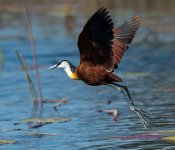 african jacana flight D800 80-400mm_N8D3944_edited-2.jpg206.2 KB · Views: 130
african jacana flight D800 80-400mm_N8D3944_edited-2.jpg206.2 KB · Views: 130 -
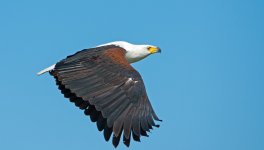 african fish eagle flight D800 80-400mm_N8D3958_edited-2.jpg155.6 KB · Views: 136
african fish eagle flight D800 80-400mm_N8D3958_edited-2.jpg155.6 KB · Views: 136 -
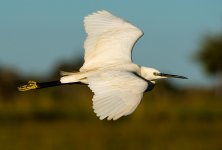 little egret flight D800 80-400mm_N8D3337_edited-1.jpg116.1 KB · Views: 125
little egret flight D800 80-400mm_N8D3337_edited-1.jpg116.1 KB · Views: 125 -
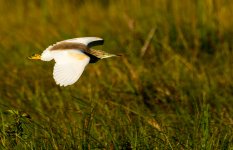 squacco heron D800 80-400mm_N8D3305_edited-2.jpg265.7 KB · Views: 110
squacco heron D800 80-400mm_N8D3305_edited-2.jpg265.7 KB · Views: 110 -
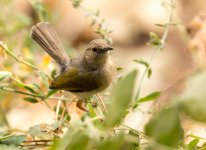 grey-backed camaroptera_N8D1641_edited-1.jpg178.5 KB · Views: 135
grey-backed camaroptera_N8D1641_edited-1.jpg178.5 KB · Views: 135
Spectacular Neil.... See... Good light is everything...
So glad I live in Africa. hehehehe...
Regards
Don't rub it in. I guess a safari for us is just a drive in the country for you.
I would be happy living permanently in a game park.
Neil.
Indrajeet Singh
Indrajeet Singh
Its a great lens Neil, I have had it for a while, I bought from the first batch imported to India. I use it on my D7100 most the time and occasionally on my D600 and I am extremely happy with it all round. I had a few problems initially with the VR producing soft images and have learned a few things about it since. The results now are awesome.I picked up the lens yesterday and took it out to the mudflats with me today. I also had the D800 back from service ( AF adjusted) and a V2 that I had bought from a friend. I had updated the firmware on the V2 and the FT1 to add Continuous focus.
Although very hot it was a nice morning. The AF is very fast and the color looks good. I used the VR on and off and it seemed very good.
Here are a few photos from today with both cameras.
Neil
You will be pleased you got it.
what are the things you learnt about the VR producing soft images? I too am going through this phase...
As mentioned above. VR can not complete its cycle at shutter speeds over 1/500 so if shooting at SS above this you need to switch it off to prevent the VR from compromising the IQ and delivering the occasional non-sharp image.
I bought the 80-400 to complement the 300/2.8 with TC20EIII, especially when traveling on non-dedicated birding trips, but for fine feather detail (especially over 10-15m) it doesn't compare.
I think Neil's photos highlight it's strengths perfectly. Great as a wildlife / large birds / general walkabout lens but not for dedicated birding.
I took it on a recent trip to Kyoto to celebrate my wife's 50th. It was out-standing; shrines, temples, scenic, street, portraits (especially) all very accomplished. Small birds - not so much.
I will add that this lens needs good light - in poor light it is too slow at 400mm (f5.6) and just not up to it.
I think Neil's photos highlight it's strengths perfectly. Great as a wildlife / large birds / general walkabout lens but not for dedicated birding.
I took it on a recent trip to Kyoto to celebrate my wife's 50th. It was out-standing; shrines, temples, scenic, street, portraits (especially) all very accomplished. Small birds - not so much.
I will add that this lens needs good light - in poor light it is too slow at 400mm (f5.6) and just not up to it.
Last edited:
I bought the 80-400 to complement the 300/2.8 with TC20EIII, especially when traveling on non-dedicated birding trips, but for fine feather detail (especially over 10-15m) it doesn't compare.
I think Neil's photos highlight it's strengths perfectly. Great as a wildlife / large birds / general walkabout lens but not for dedicated birding.
I took it on a recent trip to Kyoto to celebrate my wife's 50th. It was out-standing; shrines, temples, scenic, street, portraits (especially) all very accomplished. Small birds - not so much.
I will add that this lens needs good light - in poor light it is too slow at 400mm (f5.6) and just not up to it.
Yes, I'm off to New York area tomorrow for two weeks of birds and autumn colors. I'm taking the 300/4 AFS + 1.4x for the birds and leaving the new zoom at home. I'll also have a 20/28/50 mm for the landscapes.
Neil.
As mentioned above. VR can not complete its cycle at shutter speeds over 1/500 so if shooting at SS above this you need to switch it off to prevent the VR from compromising the IQ and delivering the occasional non-sharp image.
Frogfish,
I don't think we can assume that at all. Firsty we don't know how Nikon implements VR3. Secondly even if it has a 1/1000 feedback loop the shutter never takes less time than the max synch speed of 1/250 or 1/320ths so this could be capable of steadying the shot even at 1/4000s.
Thirdly I have taken some 30,000 images with the D7100 and 80-400vr and generally shoot at 1/1000s. I have done repeated tests with VR off, on and active and so far can't honestly say that the VR makes any difference to IQ. What it does do is make it easy to lock focus an exactly the bit of a bird that I want to. I handhold my combo and usually leave it on active.
Just so others know that there is evidence that the VR can work well at high shutter speeds.
Frogfish,
I don't think we can assume that at all. Firsty we don't know how Nikon implements VR3. Secondly even if it has a 1/1000 feedback loop the shutter never takes less time than the max synch speed of 1/250 or 1/320ths so this could be capable of steadying the shot even at 1/4000s.
Thirdly I have taken some 30,000 images with the D7100 and 80-400vr and generally shoot at 1/1000s. I have done repeated tests with VR off, on and active and so far can't honestly say that the VR makes any difference to IQ.
Good to hear of your positive experience RMWD.
It's a contentious issue. However some evidence is certainly out there and can be found with some judicious Googling, there are plenty of owners with the opposite experience to your own. It really depends where in the cycle the shutter operates but when people such as Thom Hogan, a long time dedicated and pre-eminent Nikon expert & tester, comment on this and theorise that it affects image quality then that tends to sway my opinion.
Quote : This article is based upon years of experience with Nikon's VR system, very close analysis of testing results, talks with many other professionals, and even information from Nikon insiders
http://www.bythom.com/nikon-vr.htm
The issue isn't with the sync speeds but with the VR sample rates, a constant 1,000hz. This is a quote from Nikon :
The detection of the low frequency band in camera shaking has been greatly expanded, so the VR effect has become available even if the shutter speed is quite slow.
Your comment on keeping the AF point stable is certainly valid and also it should be mentioned that the VR keeps the image stable in the VF too.
Of course you are absolutely right that it is not known if Nikon's current implementation of VR overcomes the issue of potential interference over 1/500 but still we can not disregard the weight of evidence based on just one's own (possibly flawed) testing.
It's interesting that Nikon themselves do not help in this regard, and we can only wonder why (if there is no effect then why not state that VR can be left on except when on a tripod ?), but only state (in relation to slow SS with no comment on upper limits) :
The improvement in VR II performance has been made possible by the introduction of improved movement sensors, enabling better detection of camera and lens movement. The new sensor and circuitry are able to provide a more accurate compensation of the movement that occur at slower shutter speeds, resulting in sharper images.
Nikon also state (and in this regard note the 1/1000 figure and add on the time to complete the cycle :
These sensors detect camera movement as angular velocity every 1/1000 second. Angular velocity data is sent to a microcomputer built right into lens, which then calculates the amount of compensation needed. After this data is transmitted to the VR unit, the adjustments are made instantaneously ...
Probably it's best to go with one's own experience/opinion unless it's conclusively proven one way or the other. If you are getting acceptable results leaving it on then there is no need to change. However, I'll be keeping mine switched off over 1/500
Last edited:
Good to hear of your positive experience RMWD.
It's a contentious issue. However some evidence is certainly out there and can be found with some judicious Googling, there are plenty of owners with the opposite experience to your own. It really depends where in the cycle the shutter operates but when people such as Thom Hogan, a long time dedicated and pre-eminent Nikon expert & tester, comment on this and theorise that it affects image quality then that tends to sway my opinion.
Quote : This article is based upon years of experience with Nikon's VR system, very close analysis of testing results, talks with many other professionals, and even information from Nikon insiders
http://www.bythom.com/nikon-vr.htm
The issue isn't with the sync speeds but with the VR sample rates, a constant 1,000hz. This is a quote from Nikon :
The detection of the low frequency band in camera shaking has been greatly expanded, so the VR effect has become available even if the shutter speed is quite slow.
Your comment on keeping the AF point stable is certainly valid and also it should be mentioned that the VR keeps the image stable in the VF too.
Of course you are absolutely right that it is not known if Nikon's current implementation of VR overcomes the issue of potential interference over 1/500 but still we can not disregard the weight of evidence based on just one's own (possibly flawed) testing.
It's interesting that Nikon themselves do not help in this regard, and we can only wonder why (if there is no effect then why not state that VR can be left on except when on a tripod ?), but only state (in relation to slow SS with no comment on upper limits) :
The improvement in VR II performance has been made possible by the introduction of improved movement sensors, enabling better detection of camera and lens movement. The new sensor and circuitry are able to provide a more accurate compensation of the movement that occur at slower shutter speeds, resulting in sharper images.
Nikon also state (and in this regard note the 1/1000 figure and add on the time to complete the cycle :
These sensors detect camera movement as angular velocity every 1/1000 second. Angular velocity data is sent to a microcomputer built right into lens, which then calculates the amount of compensation needed. After this data is transmitted to the VR unit, the adjustments are made instantaneously ...
Probably it's best to go with one's own experience/opinion unless it's conclusively proven one way or the other. If you are getting acceptable results leaving it on then there is no need to change. However, I'll be keeping mine switched off over 1/500
I agree with you that a sample of one is of little use in a test but I'm not the only one saying it usually makes no difference. Also I have taken some 50,000 +images with different Nikon VR's and five different Nikon cameras most at shutter speeds above 1/500s and can't tell the difference. So I no longer worry about it. Sure sometimes I get a shot with that circular VR bokeh, but it is rare and I can't reproduce it, so it doesn't matter. Also if I remember and have the time I switch off VR for birds in flight with my smaller cameras as I feel the the AF performs more quickly on all but the D800 and this may be a power issue.
Btw my 500mm f4 detects whether the lens is handheld or on a tripod and changes the way VR works but doesn't switch it off.
One thing no one has addressed is that though the VR may measure at a frequency of 1000hz, the shutter will have completed its movement in 1/250ths even when the shutter is set to 1/400s or 1/8000s. As that movement is four times longer than the sampling time, VR should still work making 4 micro corrections during one shutter duration.
Either way the jury is still out on this one in general but for me, for what I do it is settled enough for me to leave it on all the time.
Similar threads
- Replies
- 0
- Views
- 1K
Users who are viewing this thread
Total: 2 (members: 0, guests: 2)



